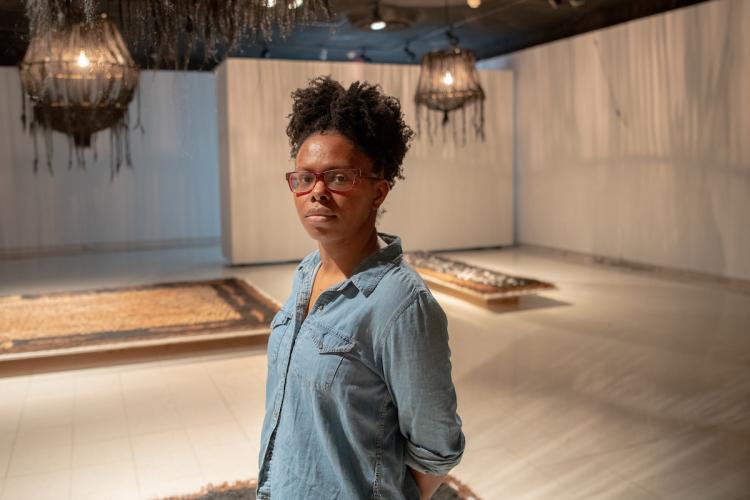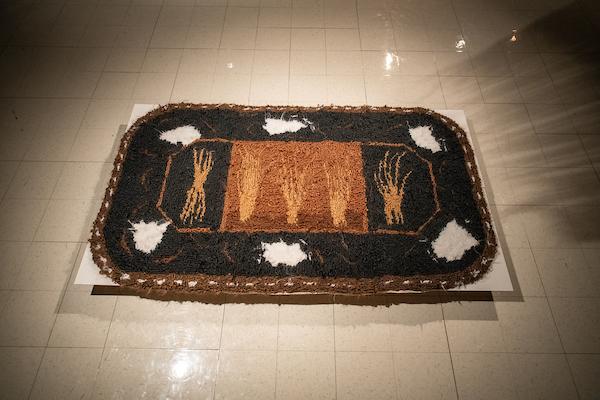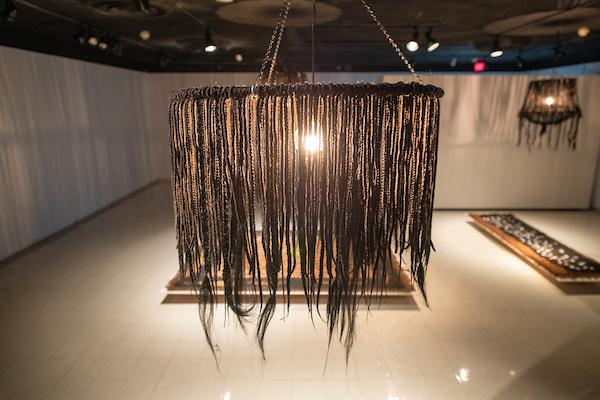
Recent OHIO graduate Hunter participates in virtual Chautauqua Visual Arts residency program

Ohio University M.F.A. graduate Quinn Hunter was one of only 38 artists worldwide selected for the prestigious Chautauqua Visual Arts residency program. The seven-week program at the Chautauqua Visual Arts (CVA) transitioned to offering the residency virtually this year due to the global pandemic.
“I’m still processing all that I experienced during the seven-week residency,” Hunter said. “It was quite overwhelming the amount of information we received, and I think the one thing that really stood out is the idea of what a residency is. This year hasn’t offered typical experiences, including this residency being all online compared to its normal in-person, immersive culture, but I truly learned from this experience exactly how to adapt.”
The CVA residency program is centered on artists working with mentors in small and intimate group settings that emphasize one-on-one conversation and offers them the opportunity for sustained and focused time for research, experimentation, engagement, and interaction with different fields in the arts.
“We were able to choose several mentors to work with over the seven weeks, each unique and knowledgeable experts in their own fields of research,” Hunter added. “I got to listen and learn from not only them but also my fellow peers in the cohort who were from all over the world. Everyone brought something incredibly different to the program and we built off each other, having incredible conversations via Zoom.”
In addition to working with exceptional artists, critics, and curators, the residency at CVA offers its artists access to all its programming, including lectures, events, and programming outside of CVA. Participants also have the opportunity to interact with both mentors who will be in residence over the course of the residency and visiting artists.
Hunter, a native of Charlotte, N.C., graduated this past spring with her M.F.A. in Sculpture and Expanded Practice, specifically looking at the way Black women negotiate between the self and the world – between the crisis and the authentic. Through acts of self-exhibition, she interrupts the views on the body and asks questions about the prescribed performances of femininity to the black body.

She looks at how the erasure of historic labor done by women of color is connected to contemporary ways in which the work of women of color is dismissed. Using hair tools and hair weave as material, she connects the historic Black female body to current spaces where they perform invisible labor. Her objects reference the space of the antebellum plantation house and the objects of luxury that could be purchased because of the wealth that was amassed through the erased slave labors and those bodies. Through the labor of creating the objects and using artificial hair integrations, a material that is distinctly related and connected to the contemporary Black female body, she shows how interwoven the erased labor of African American women is to the antebellum period and the wealth amassed during it.

Aside from continuing to work on her art, Hunter accepted a position at Wayne State University as an Artist in Lecture for the 2020-2021 school year.
